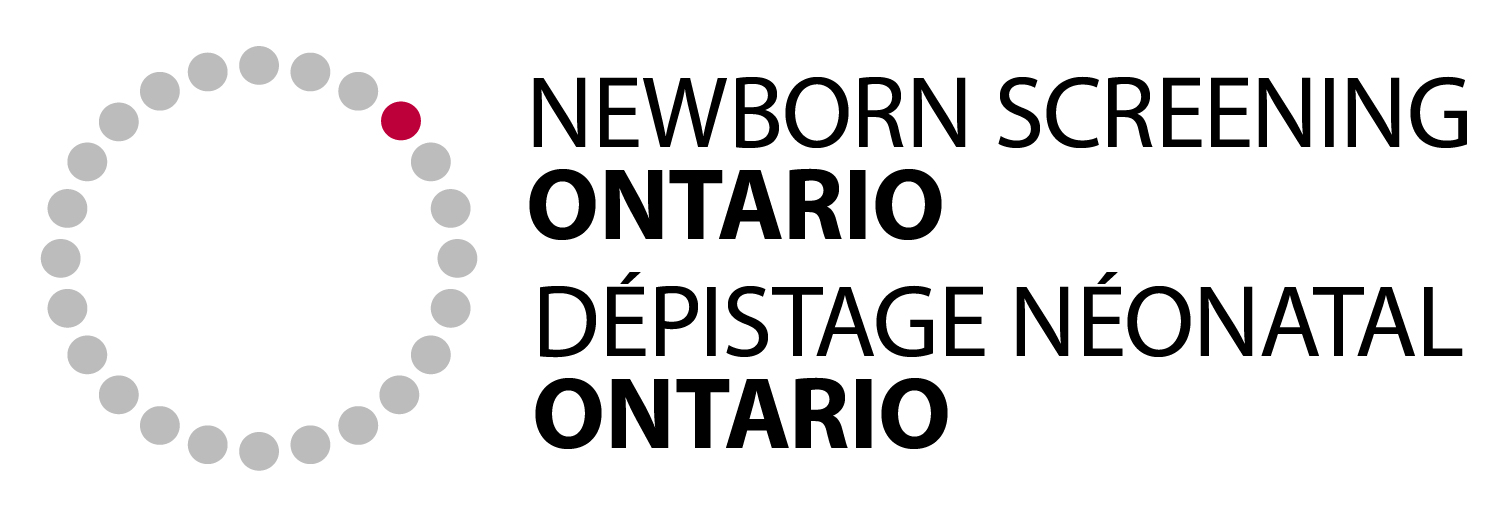Targets of Newborn Screening
The NSO molecular laboratory provides molecular diagnostic testing for all diseases on Ontario’s newborn screening panel except for hemoglobinopathies (HBA and HBB, testing performed at Hamilton Health Sciences Centre), cystic fibrosis (CFTR, testing performed at Hospital for Sick Children), Hurler disease (IDUA, testing performed at London Health Sciences Centre) and spinal muscular atrophy (SMN1, testing performed at the Children’s Hospital of Eastern Ontario and Hospital for Sick Children). This testing is organized into panels, and all genes are also available as single gene tests. Beyond the diseases specifically targeted by newborn screening, some panels also include genes for related diseases.
We accept samples from patients of all ages and for multiple indications. Diagnostic testing can be requested for any individual who presents with symptoms of these disorders. Carrier testing can also be requested (including familial variant testing and full gene sequencing for reproductive partners). Prenatal diagnosis and maternal cell contamination studies are also offered (see FAQ for more details).
Testing methodologies
- Inborn errors of metabolism (IEM):
- NGS targeted panel for all genes
- qPCR common variant testing for HADHA, CPT1A
- MLPA Deletion/duplication testing for PAH and ACADM and common variant testing (ACADM)
- Congenital adrenal hyperplasia:
- 21-Hydroxylase deficiency: Sanger sequencing, long-range PCR and MLPA
- Other etiologies: NGS targeted panel
- Inborn errors of Immunity (IEI): Augmented exome slice (exome reanalysis is available on a research basis with patient consent). This assay is based on the Agilent CRE V1.0 technology which was then custom augmented by adding probes to regions with consistently poor coverage.
Test limitations for next generation sequencing targeted panels and exome slices
Not all exons are captured equally well, resulting in some regions that are consistently underrepresented (>99% of targeted regions will have >30X read depth for coding bases; >99.7% at >20X), with 20X coverage as our minimal quality standard for reporting. Sanger sequencing will be used to supplement NGS for targets with <20X read depth for any coding base (except for a subset of genes on the Severe Combined/Primary Immune Deficiency Exome Slice Panel – please see our gene list [179.26 KB] for further details), and/or for variant validation. Copy Number Variation (CNV) analysis is not routinely performed; we do however manually inspect NGS data for possible CNVs by assessing read depth variation in genes with one clinically significant variant. While we are not able to assess the sensitivity of this method, we have successfully identified many CNVs with this approach. Our capture methodology along with NGS does not detect large deletions, insertions, chromosomal abnormalities or large rearrangements. We continue to refine our approaches to CNV analysis and updates will be posted here. Please feel free to contact us if you have questions about coverage for possible variants in any genes, generally or in the context of a specific patient.
Contact Us
Children’s Hospital of Eastern Ontario
415 Smyth Road
Ottawa, Ontario K1H 8M8
Toll-Free: 1-877-627-8330
Local: (613) 738-3222
Fax: (613) 738-0853
